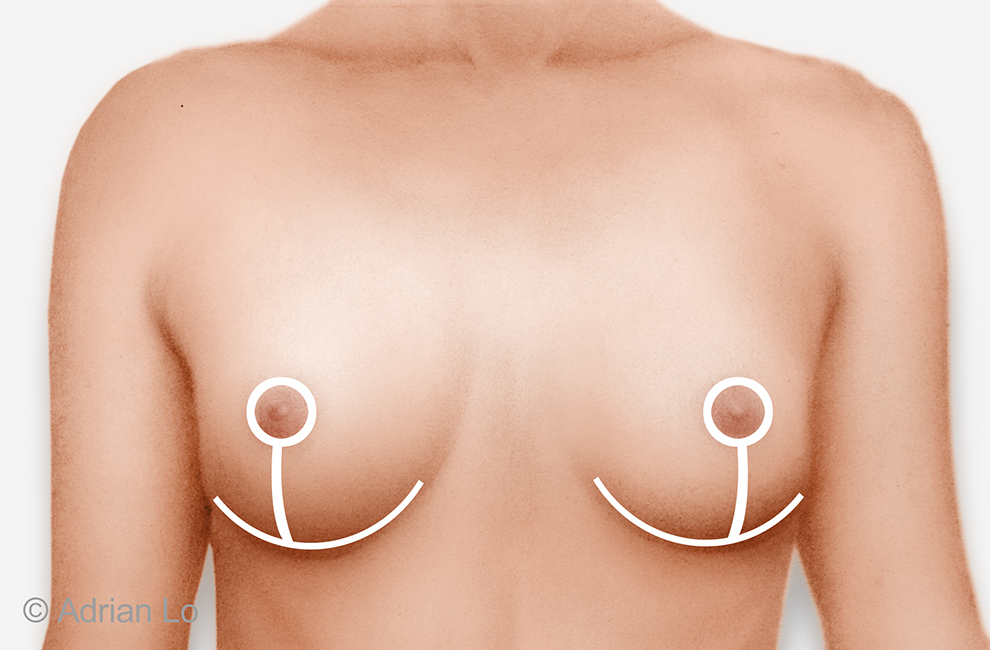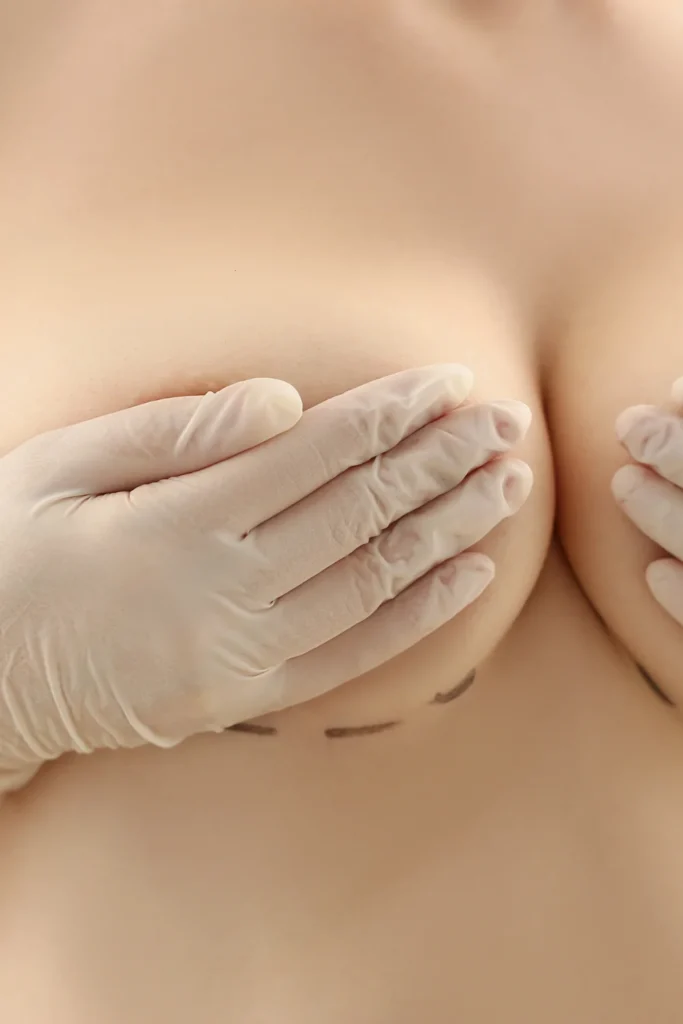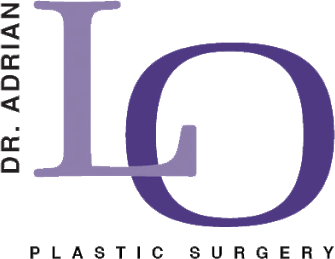Time leaves its signature on every part of our bodies.
For many women, changes in breast position and shape represent one of the most noticeable transformations.
Breast ptosis — the medical term for breast sagging — affects many women. Yet, misconceptions about its causes and treatments persist.
While celebrities and social media influencers promote quick fixes and miracle products, the science behind breast tissue changes tells a different story. Breast ptosis affects women of all body types and can appear at any age.
Let’s talk more about this common condition and the available treatment options to empower you to make an informed decision about your breast rejuvenation options.
Defining Breast Ptosis

Understanding breast ptosis requires knowledge of breast anatomy.
Breast ptosis occurs when breast tissue descends below its natural position on the chest wall. The medical community defines this condition through the relationship between the nipple position and the inframammary fold (IMF) – the natural crease beneath the breast.
Some degree of ptosis is natural and expected over time, however the extent of ptosis can sometimes impact a woman’s confidence and comfort.
Related: Tips for Minimizing Your Breast Augmentation Scars
Understanding Breast Anatomy

Before exploring treatment options for breast ptosis, it’s crucial to understand the complex architecture of breast tissue. The breast’s natural position and shape depend on an intricate network of supportive structures working in harmony.
Cooper’s Ligaments and Support Structures
Cooper’s ligaments — named after Sir Astley Cooper — act as nature’s internal scaffolding for breast tissue. These fibrous bands connect breast tissue to the chest wall, creating a natural suspension system.
Think of them as biological suspension bridges: when healthy and taut, they maintain breast position effectively. However, these ligaments can stretch over time, like a rubber band losing its elasticity. Once stretched, they cannot naturally return to their original tension.
Role of Skin Elasticity
Skin elasticity serves as the breast’s primary external support system. Young, healthy skin contains abundant collagen and elastin fibers that allow it to stretch and retract efficiently. However, several factors affect skin elasticity:
- Age-related collagen breakdown
- UV damage from sun exposure
- Hormonal changes
- Rapid weight fluctuations
- Genetic predisposition
- Environmental factors
When skin loses elasticity, it cannot adequately support breast tissue, contributing to ptosis development.
This process accelerates after age 40, when collagen production naturally decreases.
Muscle and Tissue Interaction
The pectoralis major muscle lies beneath the breast tissue but doesn’t directly support breast position. Instead, breast tissue rests on this muscular foundation, surrounded by fat cells that provide volume and shape.
This relationship explains why:
- Chest exercises alone cannot prevent or correct ptosis
- Breast tissue moves independently of muscle
- Weight loss affects breast volume but not necessarily position
- Surgical procedures must address both tissue and skin for optimal results
Understanding these anatomical relationships helps explain why certain treatments work — and why others don’t. It also highlights why a comprehensive approach to breast ptosis treatment often yields the most successful outcomes.
Related: 7 Benefits of Choosing the Transaxillary Incision for Your Breast Implant Surgery
Grades of Breast Ptosis
Clinical studies show breast ptosis progression varies among individuals. Understanding breast ptosis grades helps determine the most appropriate treatment approach.
Grade I (Mild Ptosis)
In mild ptosis, the nipple descends to the level of the IMF but remains above the bulk of the breast tissue. This initial stage often presents subtly, with many women noticing minor changes in breast shape and position, particularly when unsupported.
Grade II (Moderate Ptosis)
As ptosis progresses to Grade II, the nipple falls below the IMF but remains above the lower breast contour. At this stage, changes become more noticeable, and women may experience increased difficulty with clothing fit and breast support.
Grade III (Severe Ptosis)
The most advanced form of breast ptosis involves the nipple falling significantly below the IMF, with the nipple pointing downward. Grade III ptosis typically presents with substantial breast tissue descent and can affect both physical comfort and emotional well-being.
Pseudoptosis
Distinct from true ptosis, pseudoptosis occurs when the breast tissue sits below the IMF while the nipple maintains its position above it. This condition often develops after pregnancy or significant weight loss, creating a deflated appearance without actual nipple descent.
Restore your breast profile with Dr. Lo’s personalized treatment for natural-looking results. Contact us today!
Common Causes of Breast Ptosis

Let’s examine some of the most common breast-sagging causes.
Natural Aging Process
Many factors contribute to breast ptosis development.
Time inevitably affects breast tissue through the gradual breakdown of collagen and elastin fibers. These proteins provide structural support to breast tissue, and their diminishment leads to decreased skin elasticity.
After age 40, these changes typically accelerate due to hormonal shifts associated with perimenopause and menopause.
Pregnancy and Breastfeeding
During pregnancy, breasts undergo significant changes as they prepare for milk production.
The tissue expands and contracts throughout this process, potentially stretching the skin and Cooper’s ligaments — the supportive structures within the breast.
While breastfeeding itself does not cause ptosis, the breast changes during pregnancy and subsequent loss of breast tissue can contribute to tissue laxity.
Significant Weight Changes
Substantial weight fluctuations stress breast tissue, much like repeatedly stretching and relaxing an elastic band. The skin’s ability to retract becomes compromised with multiple cycles of weight gain and loss, potentially accelerating ptosis development.
This effect becomes particularly pronounced with weight changes exceeding 10 pounds or more.
Treatment Options for Breast Ptosis

When considering breast lift options, patients should explore modern sagging-breast treatment options that range from surgical procedures to preventive measures.
Breast Lift (Mastopexy)
Ptosis correction surgery using mastopexy techniques remains the most effective long-term solution, allowing for maximum breast lift and breast reshaping.
A mastopexy procedure repositions and lifts breast tissue and removes excess skin to restore a more youthful breast position. This surgical approach involves carefully placed incisions that allow for tissue reshaping while minimizing visible scarring.
Address age-related breast, body, and facial changes with Dr. Lo’s comprehensive rejuvenation approaches — explore our before-and-after photo gallery to see the changes for yourself.
Breast Lift with Implants
For patients seeking both improved position and enhanced volume, combining a breast lift with a breast implant placement offers comprehensive rejuvenation. There are many options for implants although a highly cohesive silicone or “gummy bear” implant is preferred.
This dual approach addresses multiple concerns simultaneously, creating fuller, more proportionate results. The procedure requires careful planning to achieve optimal implant placement and tissue reshaping.
Internal Bra Technique
This innovative approach incorporates biological or synthetic mesh material to create additional internal support during breast lift surgery.
The internal bra technique provides enhanced long-term results by supporting the newly positioned breast tissue, which is particularly beneficial for patients with significant ptosis or thin tissue quality. However, this technique is still controversial in its effectiveness.
Preventing Further Breast Ptosis
While natural breast lifting exercises may help tone chest muscles, they cannot address or correct significant breast ptosis or saggy breasts..
Supportive Undergarments
Proper breast support plays an essential role in minimizing progressive ptosis. Professional bra fitting ensures optimal daily support, while high-impact sports bras become particularly important during exercise.
The right undergarment should provide comfortable support without creating pressure points or restrictions.
Weight Management
Maintaining a stable body weight helps preserve breast tissue integrity. Focus on gradual, sustainable weight management through balanced nutrition and regular exercise.
Aim for weight fluctuations no greater than 5-10 pounds to protect skin elasticity and breast tissue position.
Skin Care Practices
A comprehensive skincare routine supports breast skin health and elasticity. Key ingredients include:
- Retinoids for collagen production
- Peptides for skin firmness
- Hyaluronic acid for hydration
Sun protection becomes particularly important for décolletage areas exposed to UV radiation, which can accelerate collagen breakdown.
Restore Your Breast Profile with Dr. Lo
Dr. Adrian Lo offers various breast drooping solutions tailored to each patient’s needs. With extensive experience in breast enhancement procedures, each treatment plan reflects careful consideration of individual anatomy, lifestyle factors, and aesthetic goals.
Take the first step toward achieving your desired breast profile by contacting Dr. Lo at our Philadelphia plastic surgery offices today!
